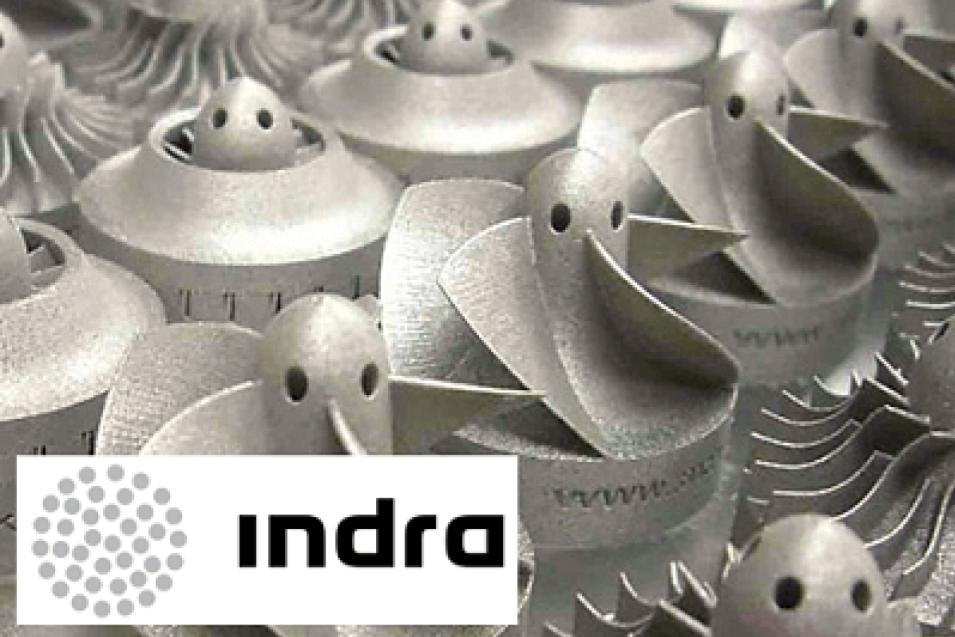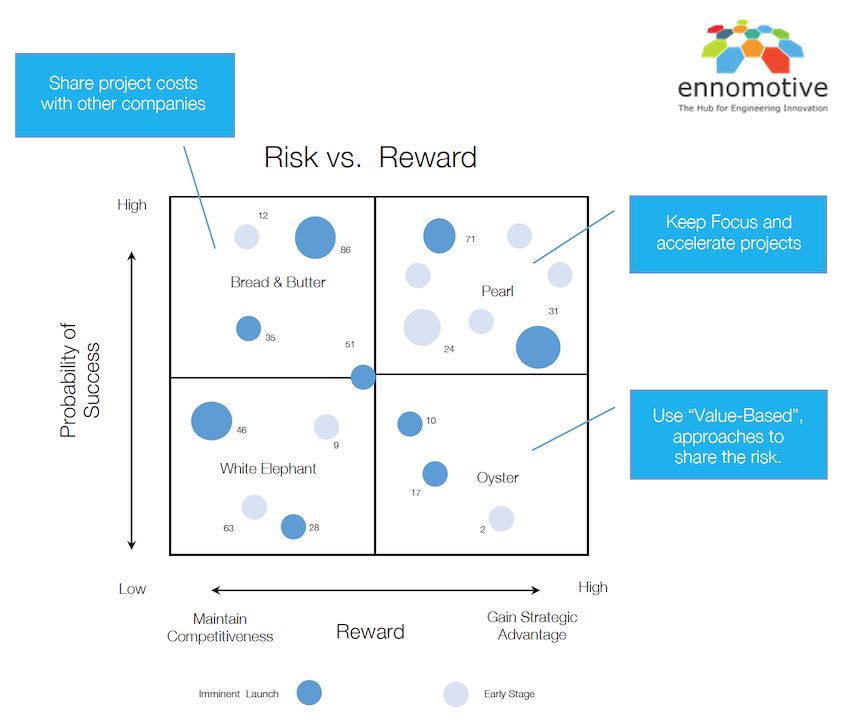SHARE
Innovation Strategies to Recover From an Economic Crisis
Innovation strategy is a key business capability to deliver growth and profitability to the company in turbulent times.
An effective innovation strategy requires an agile project portfolio management to leverage innovation opportunities. Companies need to review the innovation projects portfolio according to changes to such opportunities or available resources.
In the beginning of 2020, with the COVID-19 pandemic, most businesses had to review their portfolio of innovations. The reason was the big changes in supply chains and market demand, as well as the changes in ongoing opportunities.
Open innovation is a great partner because it can apply technologies that are already available in other sectors to get results in a matter of months. Open models also provide greater flexibility, improving opportunities, optimizing costs and reducing or sharing risks in projects. You can visit our open innovation page where we show examples of engineering innovation solved by our community.
Innovation strategies: How to respond to a crisis environment
Months into the pandemic, the latest Mckinsey Global Survey (1st to 5th of June, 2020) shows the now popular sentiment that almost every economy has declined substantially if compared to March. Across geographies, the vast majority of executives everywhere but Greater China report economic declines in the past six months. The survey also asked about changes companies have made in response to COVID-19—or plan to make, if they are not yet fully operational. The most commonly cited changes are a larger share of virtual or remote work, accelerating adoption of business technologies, and the likelihood that digital channels will serve a larger share of customers. However, there are other changes that companies are doing to fully seize the innovation opportunities that come with a crisis like this one. Some companies are adjusting their R&D and innovation capabilities to the short/medium-term budget demands. Others are also accelerating the scale-up process to recover and go back to normal ASAP.
Impact of COVID-19 on the global economy and potential recovery case-scenarios
Adapt your R&D and innovation efforts
The new economic situation requires new R&D and innovation strategies. If a company wants to survive, a really good idea would be to accelerate the return of the most profitable short/medium-term projects that need the lowest amount of resources. That way, these projects can be completed faster and then dedicate resources to longer-term initiatives. There is a 25-30% chance of optimizing the productivity of R&D and innovation resources if a company focus its efforts on short/medium-term profitable projects, accelerate the least developed projects through external resource networks and startups, and/or share/transfer risk to other companies with value-based models.
Value-added increase through re-organizing resources and accelerating and making more efficient R&D projects
Source: Fast Product Development. Michael L. George Sharing the costs of innovation projects with other companies, businesses, or partners also helps to increase the flexibility of the company's cost structure. Another option is to consider the use of external R&D networks. Besides, if a company wants to incorporate available digital solutions to the business, the quickest way is to co-create with startups and reuse their technology.
Example of acceleration and resource optimization

Challenge: crushable rock bolts for underground mining
About two years ago, an underground mining company was trying to prevent halts in crushers due to the metallic rock bolts. Their R&D department had invested around 14 months browsing and testing different materials to make crushable rock bolts but did not succeed to find a viable solution. An open call through the ennomotive website helped them find two new viable solutions in just 4 months and with only 40% of the resources previously invested. The benefit behind was about 2 million USD loss a year just in productivity due to the use of metallic rock bolts.
Help the company recover
After these months of close-to-zero activity, companies need to recover by implementing the right innovation strategies. Here are a few practices that companies are doing:
- Reducing procurement costs: Suppliers can be a good source to reduce costs through innovation (and not just negotiation).
- Digitizing processes: Startups have technologies that can sustain (e.g. for safety) or streamline business processes.
- Technology sale/licensing: Companies that have patents not being commercialized can start to generate new revenues through licensing.
- Internal capabilities monetization: New external applications for internal capabilities can bring immediate revenues to the company.
Example of cost reduction through innovative processes and new suppliers

Challenge: Alternatives to metallic prototypes and short series.
A manufacturer of Al/Li parts used an innovation challenge to find innovative manufacturing methods and alternative suppliers to reduce manufacturing lead-times and costs. The initial lead-time for short series using molds was about 6 months and very costly. After 4 weeks the lead-time could be reduced to 1 week combining 3D printing and lost-wax manufacturing and new suppliers in the US and Canada.
Example of monetizing existing IP assets

Challenge: Market applications for Cu/Graphene
A mining copper company had co-developed a new Cu/Graphene material that had a higher added value compared to the market. After some attempts to find new markets, the company decided to post a challenge at ennomotive to identify industrial applications and potential markets to sell this new nanocomposite. After 2 months more than 20 solutions were evaluated and, as a result, 4 new market applications were validated, for Li batteries, smart fibers, and others.
Example of a new digital service backed up by a distributed asset network

Challenge: Early detection of wildfires in forests.
A telecom company wanted to develop a new service for early fire detection in forests, however, they did not find a commercial solution within its supplier and startup network. This company decided to post a challenge at ennomotive to develop an IoT solution for the new service to be deployed on electrical towers. After first scouting, two final solutions were prototyped and one of those validated on electrical towers owned by their client. The winning solution came from the adaptation of existing technology from another sector.
Conclusions and approach
Companies can find good opportunities to react and help the business recover from the crisis. There are three basic steps to align companies R&D and innovation capabilities to improve business outcomes with a more flexible cost structure:
- Revisit the innovation strategy and find new opportunities
- Realign the innovation portfolio
- Adapt the R&D and innovation capabilities

Portfolio review matrix and suggested strategies
To know more details about how to realign R&D and innovation capabilities while keeping or improving outcomes, contact us.
